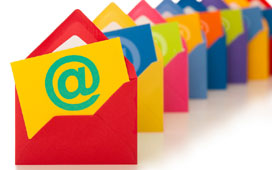
07 July 2015
The 5 steps to E-mail Ecstasy – Part 3
In this third and final part of achieving e-mail ecstasy, we reveal the final “to-do’s” before commencing on your new successful e-mail campaign. In parts 1 and 2 we discussed how to define your audience, set yourself goals and manage your mailing lists. Having done all of that, it’s time to create a schedule!
Be Realistic
Contrary to popular belief, the most important thing to consider when creating a schedule is not necessarily frequency of your e-mails (i.e. the fear of “spamming” people), but rather, it is content. It is true that you would first look at when you e-mail your audience (daily, weekly, monthly or quarterly) and this very much depends on the purpose of your e-mails. How often you e-mail as part of a targeted sales campaign will be very different from sending regular newsletters, for example.
But realistically, it comes down to content; there is no point deciding you will e-mail people weekly if you don’t have anything to e-mail them. People get switched off from e-mails if they are not relevant to them. In theory you could e-mail someone every 5 minutes and they will continue to read your e-mails as long as they are interesting enough. It is when your content isn’t strong enough that their attention falters and you see them reach for the dreaded unsubscribe button. So ensure that you have a solid structure in place to make sure you can get the content that you need to complete your schedule successfully.
Lastly, there is timing to consider; do you send on a Monday or Friday, or do you specifically avoid these days? And when is a good time? To start off with, you can look at generic e-mail trends and industry standards (generally speaking Tuesday to Thursday mid-mornings are save bets, but don’t be afraid to experiment), but over time you can use the data gathered from your own campaigns to see which days and times generate the best open rates. So study the reports and figure out when your “sweetspot” is to maximise the success of your campaigns.
Monitor Your Success
Even though with a good schedule we are now ready to roll, we ideally complete our process by constantly and consistently monitoring our success. Obviously this starts with the goals you’ve set in step 1. Any decent e-mail system (such as our own CMAil) will have a wealth of metrics available for you to review, so choose those that are the most appropriate to measure progress towards your goals. Generally speaking the most important metrics are:
Open Rate: This shows how many people have opened the e-mail. The subject line is hugely influential, but it can also offer an insight into how well your brand is perceived.
Click-through rate: This shows how many people have clicked on any of the links included in the e-mail. A good indicator of how good your content is, as well as your calls to action.
Conversion rate: especially prevalent for sales e-mails, you can calculate how successful your campaign is by dividing the number of conversions by total e-mails sent and times this by 100 to get a percentage.
Delivery rate: this indicates how many of the e-mails you sent actually arrive in people’s inboxes.
Monitoring your successes and identifying what works best is a critical phase to ensure e-mail success, so make sure you review this regularly, and make sure you address weaknesses and repeat strengths.
So there we have it! Use these steps to go forth and e-mail!
Do get in touch if you want to learn more about CMAil and how it can help you achieve success.
BACK TO LISTING
Recent Newsletters
Get satisfaction!
24 July 2017
Adding value to a legal practice
21 July 2017
Industry 4.0: the game is changing
20 July 2017
Sell The Sizzle Not The Sausage!
20 July 2017
Is Print Media Dead?
29 June 2017

